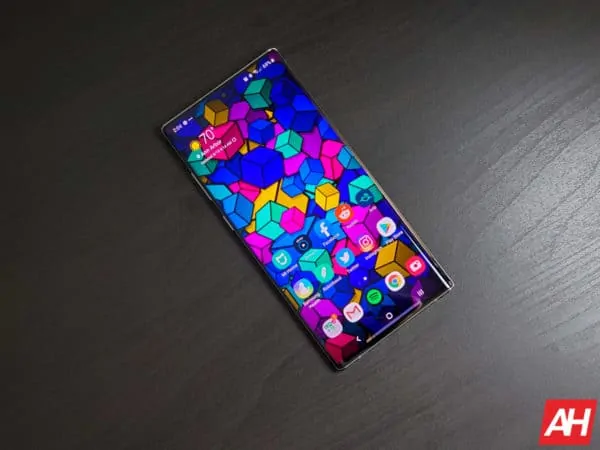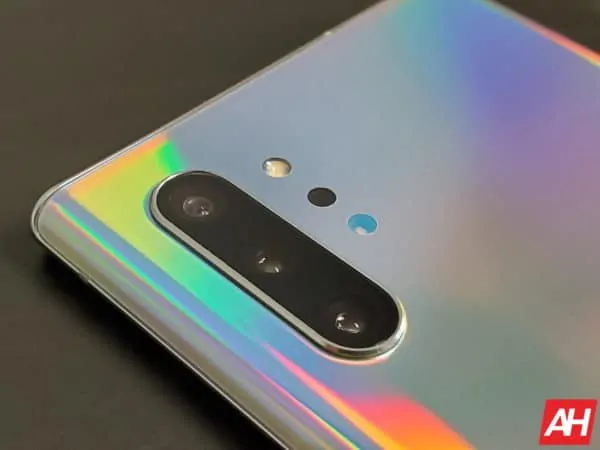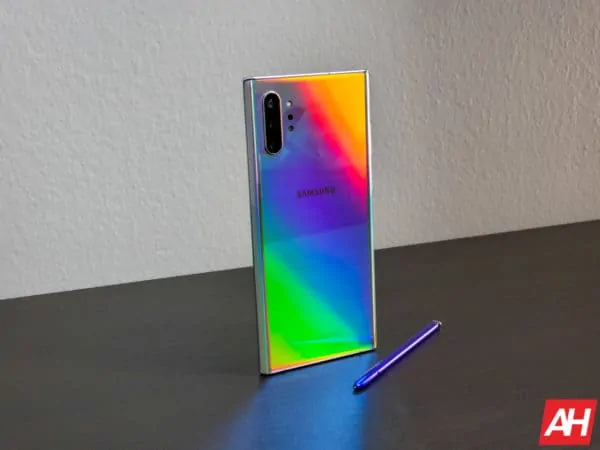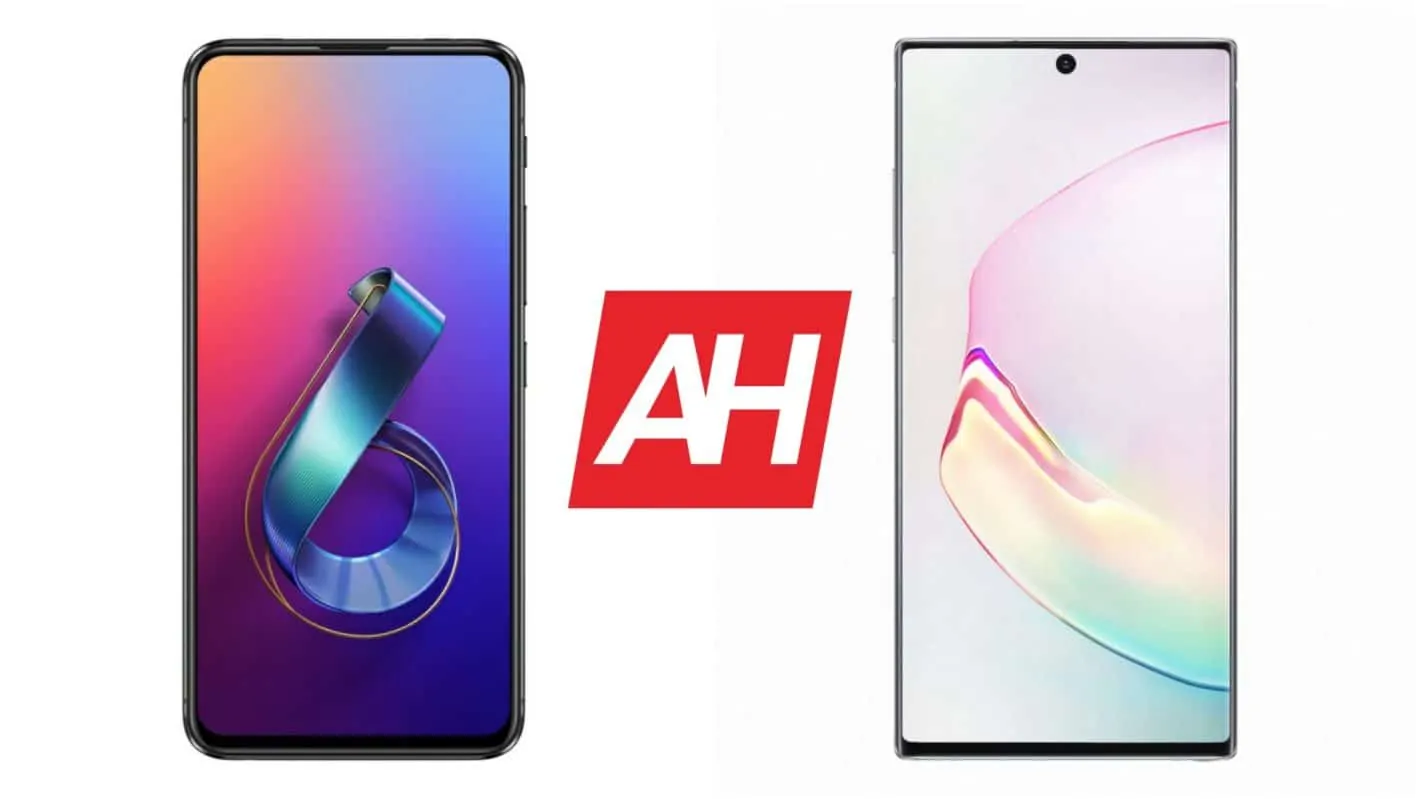It’s time for the ASUS ZenFone 6 vs Samsung Galaxy Note 10+ comparison. ASUS managed to surprise quite a few people when it announced the ZenFone 6 earlier this year. That device actually looks really nice, and it does not sport a display notch or a hole. On top of that, it utilizes a rather interesting camera setup, while it’s quite affordable at the same time.
The Galaxy Note 10+ was announced quite recently, and it actually didn’t surprise anyone. The device has been leaking for months prior to its release, so we knew exactly what to expect. The phone is as good as people have hoped it would be, and our full review will land really soon.
Having said that, these two handsets are the very best ASUS and Samsung have to offer, respectively. So it makes all the sense in the world to compare the two devices. Before we start, though, do note that you can buy two ZenFone 6 units and still have cash left, for one Galaxy Note 10+. The Galaxy Note 10+ is quite expensive on its own, so let that be on your mind throughout this comparison.
Specifications

Design
These two phones offer considerably different build. Both are made out of metal and glass, true, but they both look and feel different. The ZenFone 6 is shorter, narrower, and thicker than the Galaxy Note 10+. The ASUS ZenFone 6 also offers more curves in the corners, and is more curved in general, aside from its display.
The ZenFone 6 also does not have a display notch or display hole, unlike the Galaxy Note 10+. The Galaxy Note 10+ does offer thinner bezels than the ZenFone 6, though, as its “chin” is thinner, as are all other bezels on the phone.
The ZenFone 6 utilizes two cameras on the back, and those two cameras serve as front-facing units as well. The ZenFone 6 utilizes flip-up cameras. The Galaxy Note 10+, on the other hand, sports four cameras on the back. You will also notice a capacitive fingerprint scanner on the ZenFone 6’s back side, while the Galaxy Note 10+ uses an in-display fingerprint scanner.
Truth be said, this is all a matter of personal preference. The ZenFone 6 offers you a chance to enjoy the display without obstructions, while the Galaxy Note 10+ does not. The back side of the Galaxy Note 10+ does look sleeker, and the phone has thinner bezels. We really can’t decide, it all depends on what you prefer.
Winner: Tie
Display

This is the first category in which you’ll notice a considerable difference in quality. The ASUS ZenFone 6’s fullHD+ IPS LCD display simply cannot compete with the Galaxy Note 10+’s. The Galaxy Note 10+ has one of the best displays on the market, it utilizes a 6.8-inch QHD+ Dynamic AMOLED panel.
The ZenFone 6’s display supports HDR10 content, and it is protected by the Gorilla Glass 6. The Galaxy Note 10+ comes with that same protection, but it supports HDR10+ content, one step above the ZenFone 6.
The fact that the ZenFone 6 sports an LCD panel doesn’t help. The Galaxy Note 10+’s display offers better colors, better contrast, and those deep blacks that people seem to love so much. The Galaxy Note 10+’s display is also noticeably sharper. It is also worth noting that the Galaxy Note 10+ offers a curved panel, while the ZenFone 6’s is flat.
Winner: Samsung Galaxy Note 10+
Performance
Both the ASUS ZenFone 6 and Samsung Galaxy Note 10+ are well-equipped phones. They both include high-end specs, and are fueled by the Snapdragon 855 SoC. The Galaxy Note 10+ comes with the Exynos 9825 in most regions, though, the Snapdragon 855 is included in the US and China.
Both phones ship with Android 9 Pie, though their skins are different. ASUS’ ZenUI 6 is much better than it used to be, it’s much closer to stock Android now. While ZenUI 6 has been debloated, Samsung’s One UI skin is still filled with Samsung’s software. That is not necessarily a bad thing, though, as most of that software works really well now.
In day-to-day performance, these two phones are both really competent. Stutters are very rare in both cases, as ASUS improved ZenUI 6 quite a bit since launch. Both phones can handle anything you throw at them, and offer really smooth performance, at least for now.
Winner: Tie
Battery Life
The ASUS ZenFone 6 comes with a 5,000mAh battery. ASUS really did its best to fit in a huge battery in this phone. In collaboration with a fullHD+ display, the phone’s software, and CPU, this phone is capable of offering a lot of usage between charges.
The Galaxy Note 10+, on the other hand, includes a 4,300mAh battery. That battery is also quite large, and the device offer great battery life, but not to the extent of the ZenFone 6. The Galaxy Note 10+ can deliver 5-6 hours of screen-on-time (depending on usage), but the ZenFone 6 can push an extra hour or two on top of that.
The Galaxy Note 10+ offers faster charging, though. The phone comes with a 25W wired charger, though you can get a 45W wired charger and use it with the device. The Galaxy Note 10+ also supports 20W wireless charging, and reverse wireless charging.
The ZenFone 6 offers 18W wired charging, and reverse wired charging (10W). The device does not come with wireless charging support, unfortunately. The ZenFone 6 is still the winner of this comparison, thanks to battery endurance, which is the main point of this category.
Winner: ASUS ZenFone 6
Cameras

So, what about cameras? Well, let’s get front-facing ones out of the way first. As already mentioned, the ZenFone 6 uses rear-facing cameras as its front-facing ones as well. That makes it possible for the phone to offer some great-looking selfie, and the Galaxy Note 10’s 10-megapixel selfie camera cannot compete with that.
As far as cameras, in general, are concerned, though, the Galaxy Note 10+ is the winner. Pictures taken with its rear-facing cameras are really, really good. It offers well-balanced shots in daylight under all conditions, while its low light shots are really nice as well. Noise is kept to a minimum, and cameras provide plenty of light. Dynamic range in shots is also really great, as is white balance.
The ZenFone 6’s camera performance is… well, good, but not great. Its cameras offer less detail than the Galaxy Note 10+’s, and the phone also struggles more in low light. All in all, the Galaxy Note 10+ wins this.
Winner: Samsung Galaxy Note 10+
Audio
If you intend on using 3.5mm headphones with your phone and don’t like dongles, the ZenFone 6 is your only choice. That handset offers an audio jack, unlike the Galaxy Note 10+. In every other way, though, the Galaxy Note 10+ is a superior audio smartphone.
Both phones offer stereo speakers, though the Galaxy Note 10+’s offer better balance and sound. Its speakers are tuned by AKG, and the phone comes with Dolby Atmos support. The ZenFone 6, on the other hand, offers DTS Headphone X support.
The Galaxy Note 10+ offers 32-bit/384kHz audio output, while the ZenFone 6 can offer 24-bit/192kHz audio output. Songs sound better in general through headphones plugged in the Galaxy Note 10+, as long as those headphones are good enough.
Winner: Samsung Galaxy Note 10+
Conclusion

You may have noticed that we haven’t mentioned the S Pen yet. There’s a good reason for that, we have nothing to compare it to. If you intend on using a stylus, Samsung’s is the best one you’ll get in the world of smartphones. Samsung’s Galaxy Note smartphones are your only choice if you need a stylus. The S Pen does bring some new tricks this time around, while it brings back old ones as well.
That brings our ASUS ZenFone 6 vs Samsung Galaxy Note 10+ comparison to an end. Both of these phones are great. Both are flagship offerings, though the difference between them is substantial. The Galaxy Note 10+ will be best-suited for most people, but do note that the ZenFone 6 is nothing to scoff at. It’s a nice phone, which costs a lot less than the Galaxy Note 10+. You need to weigh out what you need in a phone, and then decide.
Winner: Samsung Galaxy Note 10+

